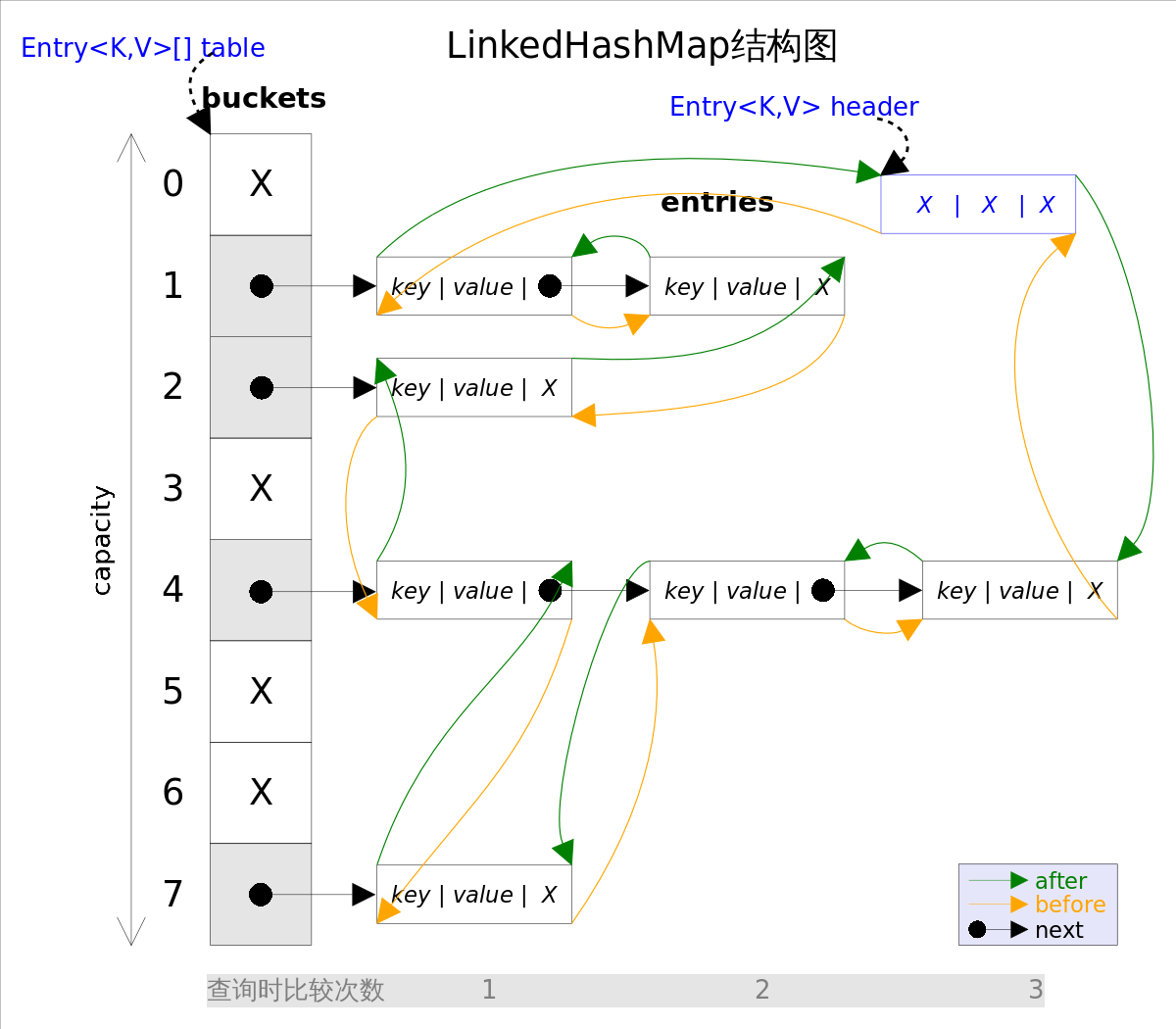原文:LinkedHashSet 和 LinkedHashMap
介绍
LinkedHashSet和LinkedHashMap在Java里也有着相同的实现,前者仅仅是对后者做了一层包装,也就是说LinkedHashSet里面有一个LinkedHashMap(适配器模式)。因此本文将重点分析LinkedHashMap。
LinkedHashMap实现了Map接口,即允许放入key为null的元素,也允许插入value为null的元素。从名字上可以看出该容器是linked list和HashMap的混合体,也就是说它同时满足HashMap和linked list的某些特性。可将LinkedHashMap看作采用linked list增强的HashMap。

事实上LinkedHashMap是HashMap的直接子类,二者唯一的区别是LinkedHashMap在HashMap的基础上,采用双向链表(doubly-linked list)的形式将所有entry连接起来,这样是为保证元素的迭代顺序跟插入顺序相同。上图给出了LinkedHashMap的结构图,主体部分跟HashMap完全一样,多了header指向双向链表的头部(是一个哑元),该双向链表的迭代顺序就是entry的插入顺序。
除了可以保迭代历顺序,这种结构还有一个好处:迭代LinkedHashMap时不需要像HashMap那样遍历整个table,而只需要直接遍历header指向的双向链表即可,也就是说LinkedHashMap的迭代时间就只跟entry的个数相关,而跟table的大小无关。
有两个参数可以影响LinkedHashMap的性能:初始容量(inital capacity)和负载系数(load factor)。初始容量指定了初始table的大小,负载系数用来指定自动扩容的临界值。当entry的数量超过capacity*load_factor时,容器将自动扩容并重新哈希。对于插入元素较多的场景,将初始容量设大可以减少重新哈希的次数。
将对象放入到LinkedHashMap或LinkedHashSet中时,有两个方法需要特别关心:hashCode()和equals()。hashCode()方法决定了对象会被放到哪个bucket里,当多个对象的哈希值冲突时,equals()方法决定了这些对象是否是“同一个对象”。所以,如果要将自定义的对象放入到LinkedHashMap或LinkedHashSet中,需要@OverridehashCode()和equals()方法。
注:LinkedHashMap是非同步的(not synchronized)
方法剖析
put()
put(K key, V value)方法是将指定的key, value对添加到map里。该方法首先会对map做一次查找,看是否包含该元组,如果已经包含则直接返回,查找过程类似于get()方法;如果没有找到,则会通过addEntry(int hash, K key, V value, int bucketIndex)方法插入新的entry
注意,这里的插入有两重含义:
|

// LinkedHashMap.addEntry() void addEntry(int hash, K key, V value, int bucketIndex) { if ((size >= threshold) && (null != table[bucketIndex])) { resize(2 * table.length);// 自动扩容,并重新哈希 hash = (null != key) ? hash(key) : 0; bucketIndex = hash & (table.length-1);// hash%table.length } // 1.在冲突链表头部插入新的entry HashMap.Entry<K,V> old = table[bucketIndex]; Entry<K,V> e = new Entry<>(hash, key, value, old); table[bucketIndex] = e; // 2.在双向链表的尾部插入新的entry e.addBefore(header); size++; }
上述代码中用到了addBefore()方法将新entry e插入到双向链表头引用header的前面,这样e就成为双向链表中的最后一个元素。addBefore()的代码如下:
// LinkedHashMap.Entry.addBefor(),将this插入到existingEntry的前面 private void addBefore(Entry<K,V> existingEntry) { after = existingEntry; before = existingEntry.before; before.after = this; after.before = this; }